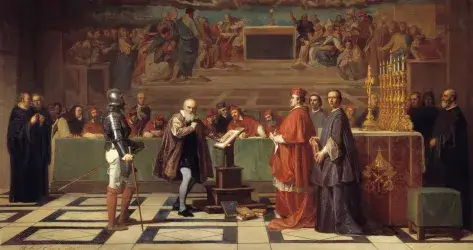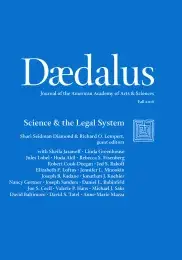
Introduction
In their introduction to the issue, Shari Seidman Diamond and Richard O. Lempert discuss the tensions and areas of overlapping interest at the interface of science and the legal system. Previewing the essays that follow–many of which were written by scientist-lawyer teams, or authors who are themselves both scientists and legal scholars–Diamond and Lempert divide the issue into three sections: “Connecting Science and Law”; “Accommodation or Collision: When Science and Law Meet”; and “Communicating Science in Court.” Through the insights offered and solutions suggested throughout the issue, Diamond and Lempert remain optimistic about future collaboration between science and law.
Science, Common Sense & Judicial Power in U.S. Courts
Courts routinely resolve factual disputes in addition to settling legal controversies, and such fact-finding frequently involves scientific and technical evidence. Sheila Jasanoff examines the judge’s role in articulating and reinforcing prevailing cultural attitudes toward science and finds that judicial assumptions matter at three significant junctures: 1) maintaining the lay-expert boundary; 2) acting as epistemological gatekeepers; and 3) deciding how to classify and categorize things as a prelude to applying legal rules. Each kind of decision offers a window into judicial common sense, a relatively neglected topic in studies of law and science.
The Supreme Court & Science: A Case in Point
When it comes to science and technology, Supreme Court justices are often ill-equipped to grasp fully the implications of the cases they are asked to decide on scientific subjects. Linda Greenhouse explores abortion jurisprudence as a particularly interesting and consequential example of the Supreme Court’s encounter with science: from the beginning, the Court viewed women’s claim to reproductive freedom through a medicalized lens. In recent years, states wishing to curb abortion access have claimed health justifications for placing novel and onerous restrictions on abortion providers. In Whole Woman’s Health v. Hellerstedt (2016), the Court invalidated a Texas law on the ground that the claimed health benefits were insufficient to justify the predictably massive shrinkage of the medical infrastructure necessary for women to get an abortion. Evidence-based law met evidence-based medicine in a decision that demonstrated a new willingness by the Court to insist on good science in the area of abortion, and perhaps beyond.
When Law Calls, Does Science Answer? A Survey of Distinguished Scientists & Engineers
Sound legal decision-making frequently requires the assistance of scientists and engineers. Through a survey of Academy members who are scientists and engineers, Shari Seidman Diamond and Richard O. Lempert glean what motivates participation or refusal to assist in legal proceedings when asked. The survey reveals that the majority will agree to participate when asked, and when they turn down requests, the most common reasons are lack of time and absence of relevant expertise, although dissatisfaction with legal procedures is also a deterrent. Respondents also evaluated suggested structural changes that might increase their willingness to participate.
Access the online methodological appendix to the survey here.
Law & Neuroscience: The Case of Solitary Confinement
Neuroscience has the potential to break down the division in law between physiological and psychological harm and between physical and mental injury. In this way, neuroscience challenges the law’s long-unchallenged assumption that most mental suffering is inescapably subjective. Jules Lobel and Huda Akil analyze the recent use of neuroscience in evaluating the harm caused by prolonged solitary confinement to show how scientific knowledge can illuminate this complex legal issue.
Universities: The Fallen Angels of Bayh-Dole?
The Bayh-Dole Act of 1980 allowed nonprofits and small businesses to own patents on inventions resulting from federally funded research. Although universities helped get the Act through Congress, the primary goal was not to benefit universities but to promote the commercial development and utilization of federally funded inventions. But universities seem to have lost sight of this distinction. Rebecca S. Eisenberg and Robert Cook-Deegan argue that universities – acting as patent seekers, patent enforcers, and patent policy stakeholders – often work against the commercialization goals of the Bayh-Dole Act in pursuit of increased revenue.
The Intractability of Inaccurate Eyewitness Identification
Inaccurate eyewitness testimony is a leading cause of wrongful convictions. As early as 1967, the U.S. Supreme Court recognized this danger, but distinguishing reliable from unreliable eyewitness testimony was based largely on surmise. Jed S. Rakoff and Elizabeth F. Loftus explain that while significant improvements can be made to lineups, photo arrays, and other identification procedures, limitations of human perception, memory, and psychology often raise intractable barriers to accurate eyewitness testimony. One response is to sensitize jurors to the limitations of eyewitness identifications, but research has produced mixed results, with some studies showing that it helps jurors discriminate between good and bad eyewitness evidence, and other showing that it merely creates overall skepticism.
The Uncertain Future of Forensic Science
Forensic science is at a crossroads. In the last two decades, pattern evidence, like fingerprint, tool mark, and bite mark identification, has faced significant criticism for lacking adequate scientific validation or proven reliability. But the law, where so much relies on precedent, has been resistant to accepting new scientific findings. Jennifer L. Mnookin argues that the current state of forensic science reform is both “half empty” and “half full”: there has been modest and meaningful – but far from adequate or transformative – reform. She maintains that the best hope for sustained, substantial changes necessary for improving forensic science evidence within the justice system requires the creation of a national commission or institutional body that includes both research scientists and other institutional stakeholders and prevents “capture” by either forensic practitioners or advocates within our adversarial system.
Certainty & Uncertainty in Reporting Fingerprint Evidence
Fingerprint evidence can be extremely incriminating. But it is unclear how the description of fingerprint evidence by the examiner influences the weight lay jurors assign to it. Joseph B. Kadane and Jonathan J. Koehler describe their experiment that tested how lay people responded to different presentations of fingerprint evidence in a hypothetical criminal case. They found that people attached more weight to the evidence when the fingerprint examiner indicated that he believed or knew that the defendant was the source of the print. When the examiner offered a weaker, but more scientifically justifiable, conclusion, the evidence was given less weight. The authors conclude by considering implications for ongoing reform efforts.
Alternatives to Traditional Adversary Methods of Presenting Scientific Expertise in the Legal System
While a major goal of any litigation is to arrive at a correct outcome, proceedings involving expert testimony can muddy the waters. Nancy Gertner and Joseph Sanders discuss changes to typical adversarial processes that might improve trial accuracy without disrupting the overall structure, such as: 1) alterations to the organization of the trial, including concurrent expert testimony; 2) alterations to the role of the jury, including taking notes, asking questions, and receiving written expert reports; and 3) formal expert witness codes of conduct designed to better arm experts to resist the adversarial pressures that lead to biased testimony.
Scientists as Experts Serving the Court
Courts were not designed to consider the increasingly complex scientific and technical evidence needed to resolve contemporary legal disputes; party control of the presentation of evidence places great strain on the judge and jury. Daniel L. Rubinfeld and Joe S. Cecil evaluate three ways courts could appoint experts independent of the parties to assist the court: the appointment of an expert to advise the court and the parties regarding a disputed scientific issue by testifying in open court and being cross-examined by the parties; a “technical advisor” who assists the judge regarding scientific issues; and a special master who takes responsibility for the resolution of a portion of the case and prepares a written report for consideration by the court.
Improving Judge & Jury Evaluation of Scientific Evidence
The role of the expert witness in trials is a paradox. Judges and jurors need expert witnesses to help with matters beyond their understanding, yet judges are expected to act as gatekeepers to ensure that jurors are not fooled by misleading expert testimony. As gatekeepers, judges might not effectively distinguish sound from unsound expert testimony. Valerie P. Hans and Michael J. Saks suggest a variety of solutions to this issue, ranging from more effective ways of presenting technical information at trial and educational interventions supervised by the court, to more controversial measures, such as replacing conventional juries with special juries and replacing generalist judges with expert judges.
Bridging the Science-Law Divide
Opportunities for members of the scientific and legal communities to engage in ongoing consideration of issues at the interface of science and law are limited. In the late 1990s, the National Academies of Sciences, Engineering, and Medicine established the Committee on Science, Technology, and Law (CSTL) – composed of equal numbers of members from science, engineering, and law – to provide a forum that would build links between these communities. David Baltimore, David S. Tatel, and Anne-Marie Mazza discuss the range of issues investigated by the CSTL and the influence of these explorations.
